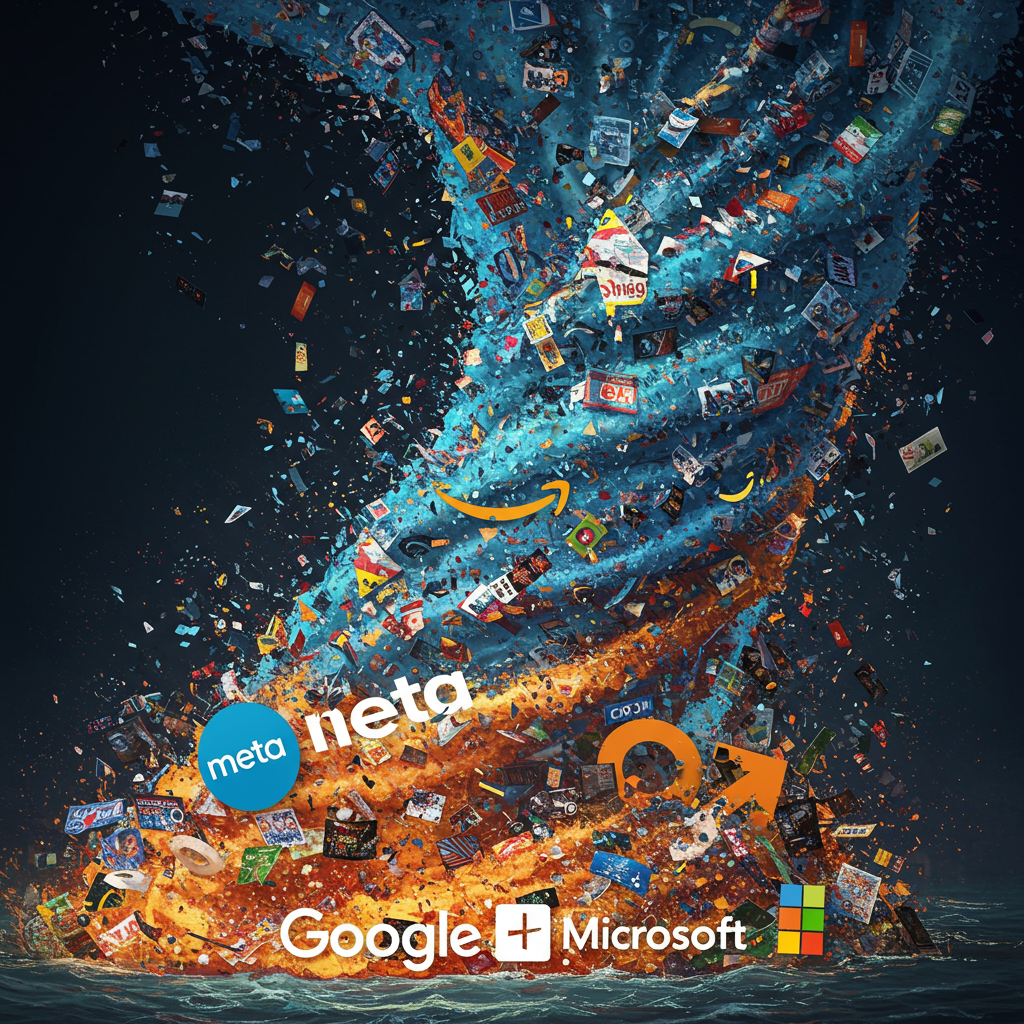A recent expert report has delivered a stark warning: premium video services, particularly highly valuable live sports broadcasts, are being pirated on an unprecedented “industrial scale.” The report directly attributes this widespread theft, which costs broadcasters billions, to the perceived “ambivalence and inertia” of major technology companies including Amazon, Google, Meta, and Microsoft.
Authored by Gareth Sutcliffe and Ollie Meir of Enders Analysis, the research highlights how Big Tech’s alleged inaction enables a problem that not only hits content owners financially but also exposes users of illegal streams to significant cyber-crime risks.
The Escalating Scale of Live Sport Piracy
The global sports broadcasting industry is a colossal market, with media rights valued at over $60 billion (£44 billion) last year. As the cost of these rights continues to climb, so too does the price for fans who wish to legally access their favorite events through legitimate streaming services. This financial pressure often drives some viewers to seek cheaper, albeit illegal, alternatives.
The Enders report illustrates the immense scale of this activity, observing that major events like high-profile football matches frequently have multiple illegal streams running concurrently, each potentially attracting tens of thousands of viewers. This level of widespread unauthorized access has led major rights holders like Sky and DAZN to warn that piracy is contributing to a “financial crisis” within the broadcast industry. Nick Herm, Chief Operating Officer of Sky Group, underscored this point, stating the Enders research confirms the “significant scale and impact of piracy” on premium live sport and called for swifter, more joined-up action from major tech platforms and governments to protect the creative industries.
Big Tech’s Accused Role in Enabling Theft
The report contends that major technology companies have “conflicting incentives,” acting as both a “friend and foe” in the battle against piracy. While some efforts to combat illegal content exist, the report argues their platforms and technologies are also fundamentally facilitating the problem.
The Device Debate: Amazon Fire Stick
One device specifically identified as a “piracy enabler” is the Amazon Fire Stick. While designed for legitimate streaming services, the report argues it is widely used to access illegal streams, particularly live sport. The research suggests this device facilitates “billions of dollars in piracy” overall.
Data provided to Enders Analysis by Sky for the first quarter of this year supports this claim within the UK market. It indicates that 59% of individuals who reported watching pirated material via a physical device in the last year used an Amazon Fire product. The report cites examples of individuals in the UK being prosecuted – jailed or given suspended sentences – for modifying and selling Fire Sticks pre-configured for illegal streaming, often advertising these services on platforms like Facebook and WhatsApp.
Responding to the accusations, Amazon stated it is “vigilant” in its efforts to combat piracy, emphasizing that pirated content violates its policies and compromises customer security. The company affirmed it works to protect customers, warns against installing apps from “unknown sources,” and has implemented changes to its Fire devices to make illegal streaming more difficult.
The Security Gap: Failing DRM Systems
Beyond streaming hardware, the report also levels criticism at the “continued depreciation” of crucial Digital Rights Management (DRM) systems, specifically Google’s Widevine and Microsoft’s PlayReady. These systems are essential for enabling secure, high-quality streaming of premium content.
The authors argue that the underlying architecture of these DRM systems has remained largely unchanged for over two decades and, due to a lack of adequate maintenance by Google and Microsoft, they are now “compromised across various security levels.” This vulnerability, according to the report, has had a “seismic impact across the industry,” effectively giving piracy the “upper hand” by allowing the theft of the highest quality video content. The report suggests these DRM solutions are in “steep decline” and require a “complete overhaul” of their technology, licensing, and support models, indicating a lack of engagement with content owners on this critical issue.
Google stated it takes the “ever-evolving challenge of copyright infringement” seriously and employs various protective measures. Microsoft did not offer a comment regarding the criticisms of its DRM system.
Platforms and Advertising
The report also noted the role played by platforms like Meta (Facebook) in hosting adverts for illegal streams, though Meta provided no comment on this aspect of the findings.
Risks for Viewers of Illegal Streams
While seeking to bypass subscription costs, users who access illegal streams face significant personal risks. The Enders report points out that fans watching content via pirated sources are often required to provide personal information, including credit card details and email addresses. This leaves them highly vulnerable to malware, phishing scams, and potential identity theft.
However, some consumers argue that a primary driver for piracy is the high cost of legal access, suggesting that lowering the price of legitimate streaming services would be the most effective way to reduce these risks and combat unauthorized viewing.
The Call for Coordinated Action
Ultimately, the Enders Analysis report serves as a strong call to action. It urges major tech platforms and governments to move beyond perceived “ambivalence and inertia” and take faster, more coordinated steps to address the rampant issue of “industrial scale” piracy, which continues to inflict significant financial damage on content owners and the wider creative industries.
References
- https://www.bbc.com/news/articles/cp3n7dx2174o
- https://www.bbc.co.uk/news/articles/cp3n7dx2174o
- https://yro.slashdot.org/story/25/05/31/0029226/football-and-other-premium-tv-being-pirated-at-industrial-scale
- https://www.endersanalysis.com/



